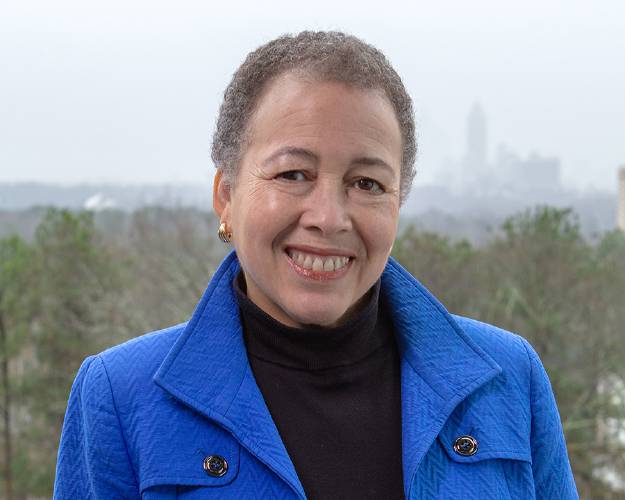HOLYOKE — While the world has played a continual defense against the psychological, social and economic fallout of the COVID-19 pandemic amid a racial reckoning, teachers throughout the state and beyond have been grappling with how to manage polarizing conversations in their classrooms.
But for many people, conversations involving race are something that has been cordoned off with yellow caution tape.
“You learned at an early age, we’re not supposed to talk about it. This is a taboo topic. It’s toxic and dangerous, and talking about it is going to be a problem,” Beverly Daniel Tatum, interim president of Mount Holyoke College and president emerita of Spelman College, said Thursday.
To help support educators and administrators in seeking racial healing, multiple Valley entities came together Thursday to host the Safe and Healthy School Summit at The Log Cabin in Holyoke.
Tatum, who is a clinical psychologist and anti-racism educator, served as the keynote speaker of the conference, which was attended by more than 140 administrators and educators from Hampshire and Franklin counties. She was joined by conversation partner Evelín Aquino, a cultural strategist, facilitator, and coach, on approaching potentially polarizing conversations around race, white supremacy, racism, and social justice within school communities.
“We are probably experiencing more polarization today than I can remember in my lifetime,” said Tatum.
During the conference, Tatum asked attendees about their first race-related memory and what the impact had on them. In surveying the room, she concluded that the majority of experiences were associated with school and took place between the ages of 5 and 7. Attendees associated the experience with words like “sadness,” “frustration,” and “shame.”
“No wonder nobody wants to have that conversation,” she said.
The elephant in the room
The conference kicked off with a listening session led by students from Valley high schools. Students shared their thoughts and experiences around what it means to have safe and healthy schools and fielded questions from attendees on how to provide more opportunities in school communities to make schools feel safe, according Mary Custard, who is the dean of students at Amherst Regional High School and served on the planning committee for the event.
“I think these kinds of events are important, so that educators can come together from our different districts, and hear from each other, educator activists, and our students, and really go back with some information that hopefully, our administration will ask us about and try to incorporate that feedback into changes,” said Custard.
Keeping in mind that each student and educator is an individual and deals with their experiences differently, providing generalized advice on how to build courage, resiliency and patience with young people isn’t always helpful, she said.
Custard noted that in several school districts, students and educators are the ones leading events that celebrate diversity and heritage rather than the administration.
“As one student pointed out early in the day: why is it turned on the student to be the ones to educate everyone?” she said.
The ninth annual event was sponsored by the office of Northwestern District Attorney David E. Sullivan, the Strategic Planning Initiative for Families and Youth, and Communities that Care coalitions, and the Collaborative for Educational Services.
“The conference is for people to come together and be together, connect with others and learn skills and resources that are available to support them,” said Lisa Goldsmith, SPIFFY Coalition Coordinator
In past years, conferences addressed mental health needs of students as well as safeguarding student rights.
“It’s about listening to educators and students about what they need. And this year, children have been impacted by these divides we have in our society, and I think we need to really address racial healing and having open conversations,” Sullivan said.
Throughout the day, educators and administrators could participate in workshops designed to strengthen skills to better address racism and racial equality in schools, and navigate difficult or polarizing conversations.
From Tatum’s perspective, the path to racial healing is routed through dialogue. Racism functions in society much like pretending there’s not a giant, smelly elephant in the room.
“We are socialized not to talk about it, not to notice it. But yet, it’s all around us. And when stuff happens, and we tune it out, we do so at our own cognitive peril because we are basically using our own capacity, our own … brainwaves or our cognitive bandwidth, to not notice, not talk about it, not pay attention to it,” she said. “We can’t solve a problem if we can’t talk about it.”

